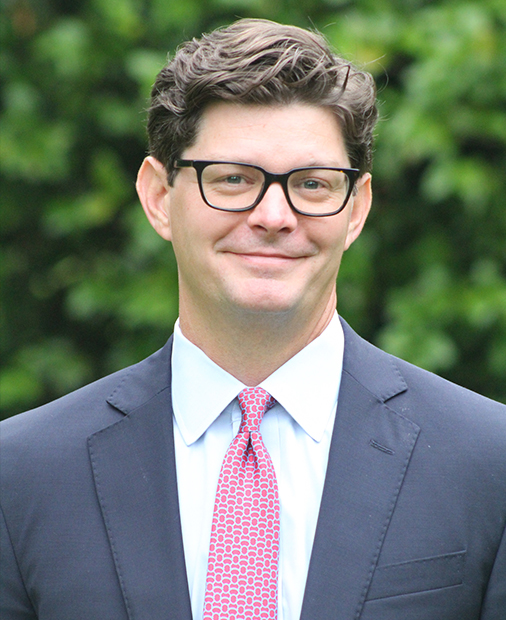Online Trademark Attorneys
Trademark Attorney Working With Clients in Saguenay, Quebec
If you're an entrepreneur, you know that protecting your intellectual property should be high on your list when it comes to safeguarding your company. However, as a successful business owner, you also know the steps and costs of filing a trademark in the U.S. can be expensive and arduous.
This conundrum can be even more overwhelming for new business owners who want to do everything possible to minimize the price of securing trademarks. They try to handle complicated tasks like trademark registration on their own, which can be a big mistake - especially when juggling the day-to-day tasks of running a business. You may be thinking, "But what about those set-it-and-forget-it services you can find online? All you have to do is plug in your info, and you're done." Using pre-made templates for trademark filing can be tempting, but doing so can leave you with inadequate protection and hurt you in the long run.
So, what is the easiest, most cost-effective route to consider that also minimizes legal risk? The truth is, before you spend money on an online filing service, it's best to consult with a trademark attorney working with clients in Saguenay, Quebec.
At Sausser Summers, PC, our experienced trademark attorneys can help you understand the trademark process step by step. We can even help with U.S. trademark filing, U.S. trademark responses, and U.S. trademark renewals at a price you can actually afford. That way, you can make an informed decision regarding your business without having to break the bank.
Resources
Sausser Summers, PC: Simplifying the U.S. Trademark Process
Hiring an attorney can be a daunting task, but at Sausser Summers, PC, our goal is to make the process as simple and seamless as possible for you. That's why we offer a straightforward checkout service. First, you choose your flat fee trademark service and fill out a short questionnaire. Then, we will contact you within 24 hours to discuss the details of our service. From there, one of our experienced trademark attorneys will get to work on your behalf.
Using a trademark attorney for filing in Saguenay, Quebec, can significantly increase your chances of a successful registration. The U.S. government recommends hiring a trademark attorney to help with your application, and our team of trademark lawyers is dedicated to meeting your needs. In fact, we help ensure your application is filed correctly the first time so you can get on with your life and avoid legal risks.
At Sausser Summers, PC, we work closely with our clients to understand their needs and provide them with sound professional advice. We never offer incomplete services, such as simply filing for registration, because that would leave you open to legal risks. You can rely on us to handle your intellectual property matters, and our flat fee services can help protect your business in a simple, straightforward, and affordable way. It's really that simple.
In terms of filing a U.S. trademark, we provide an easy three-step process to protect your intellectual property:
1. You provide your trademark info to our team via an online form.
2. Our team performs a comprehensive trademark search. This search ensures that no other marks will prevent you from registering your trademark in the U.S. Once performed, we'll send you a legal opinion letter that details our findings.
3. Sausser Summers, PC, files your U.S. trademark application. We are then listed as your Attorney of Record on file. From there, we'll provide ongoing updates regarding the status of your trademark as it works through the registration process.
The bottom line? At Sausser Summers, PC, we give both new and seasoned business owners an easy, efficient, cost-effective way to protect the one asset that sets them apart from others: their name.

The bottom line?
At Sausser Summers, PC, we give both new and seasoned business owners an easy, efficient, cost-effective way to protect the one asset that sets them apart from others: their name.
Do I Really Need a Trademark Attorney for Protecting My Business in Saguenay, Quebec?
It's not necessary to be a lawyer in order to apply for a trademark. Anyone can submit a trademark application to the U.S. Patent and Trademark Office (USPTO). However, registering a trademark involves more than just filling out a form. It's essential to conduct thorough research, accurately identify and clearly explain your trademark to ensure it receives adequate protection. And even after securing a trademark, you've got to monitor it consistently to make sure it's free from infringement.
The big takeaway here is that it's always a good idea to work with a trademark attorney to protect the intellectual property that you've worked so hard to establish. According to the Wall Street Journal, applicants are approximately 50% more likely to secure their trademark than people who file applications on their own. If your trademark application is rejected by the USPTO, you will need to revise and refile it, incurring additional filing fees. To avoid delays and extra costs, it is best to have a trademark lawyer help you get it right the first time.
Additional Benefits of Using a Trademark Attorney
Great trademark attorneys (like those you'll find at Sausser Summers, PC) will help with every step of filing and enforcing your trademark. Some additional benefits include the following:
Check to see if your proposed trademark is registered by another entity.
Conduct research to see if another business is using the trademark for which you're applying.
Provide advice and guidance on the strength of your trademark.
Draft and submit your trademark applications and application revisions.
Advice and guidance regarding trademark maintenance and protection.
Monitor the market for unauthorized use of your trademark.
Trademark enforcement to protect you against infringement.

Curious whether our trademark attorney services are right for you and your business? Contact Sausser Summer, PC, today. Let's talk about what you need, and how we can help.
What About Online Filing Services?
Online services, can provide you with basic assistance in filing your trademark. However, they will never be a legitimate substitute for an experienced trademark attorney helping clients in Saguenay, Quebec.

Although online filing services offer a step-by-step process, they take a one-size-fits-all approach to preparing legal documents. Even their advanced service only provides basic attorney assistance in completing your paperwork and helping with minor roadblocks. Online filing services' disclaimer highlights the many limitations of its services, including the fact that communications are not protected by attorney-client privilege. In addition, online filing services cannot provide advice, explanations, opinions, recommendations, or any kind of legal guidance on possible legal rights, remedies, defenses, options, selection of forms or strategies.
In other words, online filing services can offer you the necessary forms and point you in the right direction, but they cannot customize their services to your specific needs or help you with serious complications that may arise.
For the most comprehensive trademark service and protection, it's always wise to work with highly rated trademark lawyers, like you'll find at Sausser Summers, PC.
Understanding Trademarks Over Time
Trademarks in the U.S. can last indefinitely, but did you know that clients in Saguenay, Quebec can file a trademark online, only to lose protection in some circumstances? Trademarks differ from patents and copyrights in that they do not have an expiration date. However, to prevent the cancellation of a trademark, you must maintain it. To ensure that your trademark remains protected, you must actively use it in commerce and renew it with the USPTO every ten years.
The Lanham Act tells us that "use in commerce" is the legitimate use of a trademark in the ordinary course of trade. In other words, you cannot register a trademark solely to reserve the rights to it in the future. In most cases, a trademark must be used continuously in connection with the goods or services it is registered for.

Steps to Renew Your Trademark
Trademarks are registered with the USPTO and generally need to be renewed every ten years. However, there is one crucial exception that you should be aware of. Within the first ten years of owning a trademark, you must file for renewal between the fifth and sixth year from the date of your initial registration.
During this renewal period, you are required to submit a Section 8 declaration, a specimen that shows how the mark is being used, and pay the required fee. You can also apply for Section 15 Incontestability status, which can strengthen your trademark rights. This application, although not mandatory, can make it harder for others to challenge your ownership of the mark.
After the first renewal, which falls between the fifth and sixth year of ownership, the next renewal filing is due between the ninth and tenth year, and then every tenth year thereafter. In the ninth year you will need to file a Section 8 declaration, attesting to your use of the mark or excusable nonuse. You've also got to file a Section 9 renewal application before the end of the tenth year to keep your registration active.
It is worth noting that the USPTO provides a six-month grace period if you fail to renew your mark within the required time frame, but it is best not to rely on it. If you don't file within the grace period time limits, the USPTO will cancel and expire your mark.
By hiring trademark attorneys helping clients in Saguenay, Quebec, you can avoid the pitfalls and mistakes that can arise and cause you to lose your rights to the mark that represents it.
Losing Your Trademark Rights Through Abandonment
In the event that you stop using your trademark and have no plans to resume using it in commerce, it may be considered abandoned by the USPTO. This could result in the loss of your protective rights to the mark. Typically, a trademark is assumed to be abandoned if it has not been used for three years. However, you may be able to refute this presumption by providing evidence that you intend to use the mark again in the future.
Losing Your Trademark Rights Through Inappropriate Licensing
In addition to trademark abandonment, you should also be wary of improper licensing. It's important to remember that once you allow someone else to use your trademark, you must keep an eye on how they use it. You should monitor the products or services that feature your trademark to ensure that they meet consumers' expectations in terms of quality. Failure to do so can lead to a "naked" trademark license and the loss of your protective trademark rights.
How to Avoid Having to Refile Your Trademark
If you're wondering how you can avoid refiling your trademark, the answer is simple: file it correctly the first time around. Filing a trademark isn't inherently difficult, but when doing so, it's very important that certain aspects are filled out accurately in your application. If any information is missing or incorrect, the trademark application may be considered "void ab initio" or void from the beginning, requiring you to file again.
To avoid this, make sure that the information you provide in the application is accurate and complete, including the ownership of the trademark. For instance, if a corporation has multiple shareholders, it should not file under the President's personal name. The rightful owner should be the one/entity that ultimately controls the trademark and the associated goods/services.
It is also important to ensure that the goods and/or services description is precise. For example, if you sell electronic products, you should not file for research and development services despite having a research and development department. The goods/services description should reflect the goods/services you offer to customers, not the departments within your business.
Additionally, providing accurate dates of first use when filing for a trademark is crucial. The USPTO requires two dates to be specified - the date of first use anywhere and the date of first use in interstate commerce. Contact our trademark law office today to learn more about having accurate dates on your filing paperwork.


What Makes an Online Trademark Attorney Great?
At Sausser Summers, PC, we often get questions about how to distinguish run-of-the-mill consultants and others from great trademark attorneys. After all - when you're looking for an attorney to file or prosecute your business trademark, you should know their qualifications. Here are three ways you can separate the proverbial wheat from the chaff when it comes to trademark attorneys.
It's crucial to seek legal advice from a licensed trademark lawyer rather than relying on advice from non-professionals like trademark consultants. The USPTO even recommends hiring an attorney to help with the trademark process. Although trademark consultants may provide advice on trademark availability or name marketability, they cannot file the trademark for you or offer legal advice. According to the Rules of Practicing in trademark cases, "Individuals who are not attorneys are not recognized to practice before the Office in trademark matters." This rule applies to individuals who assist trademark applicants.
When searching for a trademark attorney, it's important to find someone with a strong background in trademark law. Look for an attorney who specializes in this area and has significant experience handling trademark-related cases. Avoid lawyers who don't have expertise in this field, as they may not be able to provide the guidance and support you need.
Ensure your attorney provides updates throughout the trademark registration process to avoid missing deadlines, including responding to any Office actions within six months. Failure to do so can result in trademark abandonment. The USPTO will only correspond with the listed attorney of record, so make sure your attorney keeps you informed.
In summary:
- Be sure you're using a licensed trademark attorney helping clients in Saguenay, Quebec.
- It's best to work with a trademark lawyer who has years of experience filing trademarks.
- Ensure that your trademark lawyer is willing to provide ongoing notifications relating to your trademark application process.

Trademark Attorneys Working Hard for You
Building your brand and gaining recognition for it is a significant achievement, and it's important to protect it. However, there are certain pitfalls and mistakes that can arise, causing you to lose your rights to the mark that represents it. By working with knowledgeable trademark attorneys, you can avoid these issues and file your trademark successfully.
With an A+ rating from the Better Business Bureau (BBB), Sausser Summers, PC, offers comprehensive guidance, strategic advice, and reliable representation for a variety of trademark matters. Our attorneys have years of real-world experience and, having registered countless trademarks with the USPTO, provide our clients with individualized representation when they need it most.
If you're looking for skilled, adept, and experienced counsel, look no further than our trademark law firm. Contact us today to schedule your initial consultation and learn how we can help you safeguard your brand.
Latest News in Saguenay, Quebec
Environmentalists warn against Quebec pipeline revival as politicians push for west-east link
Benjamin Shinglerhttps://www.cbc.ca/news/canada/montreal/environmentalists-quebec-pipeline-1.7452776
Social SharingWith the threat of U.S. tariffs still looming, the Quebec government has opened the door to reconsidering a controversial pipeline project transporting natural gas from Western Canada to the province, where it would be liquefied and shipped overseas.The LNG-Québec project, planned for the Saguenay area, north of Quebec City, was scrapped in 2021 due to the pipeline's environmental risks — and strong public opposition.Quebec Environment Minister Benoit Charette said this week the government wo...
Social Sharing
With the threat of U.S. tariffs still looming, the Quebec government has opened the door to reconsidering a controversial pipeline project transporting natural gas from Western Canada to the province, where it would be liquefied and shipped overseas.
The LNG-Québec project, planned for the Saguenay area, north of Quebec City, was scrapped in 2021 due to the pipeline's environmental risks — and strong public opposition.
Quebec Environment Minister Benoit Charette said this week the government would consider looking at the project again.
"We're not opposed to energy projects that respect the environmental criteria," he said.
It marked a significant shift for the Coalition Avenir Québec government, but one that shouldn't come as a surprise, given the changed political context, said Mark Purdon, a business school professor and holder of the decarbonization chair at the Université du Québec à Montréal.
"I really think it's politics. I don't think what is driving the renewal of LNG-Québec is the economic opportunity," Purdon told CBC News.
The fundamentals of the project haven't changed, and neither have the environmental concerns, he said.
The proposed project included a 780-kilometre natural gas pipeline from northern Ontario to Saguenay and a terminal to liquefy the gas in Saguenay and load it onto tankers.
It faced stiff opposition due to its environmental impacts, including threats to beluga whales and broader concerns over increased greenhouse gas emissions.
Proponents of natural gas contend it is cleaner and lower in emissions than oil and coal, though its production and transportation can release methane, a potent greenhouse gas.
One recent peer-reviewed study found that due to methane leakage, the greenhouse gas footprint from exporting liquefied natural gas (LNG) could equal or even exceed that of coal.
'Not the solutions we are looking for'
Charles-Édouard Têtu, climate policy analyst at the environmental group Équiterre, said in an interview the province should prioritize clean energy projects rather than fossil fuels.
"These are not the solutions we are looking for and they would not answer the needs of Canadians and Quebecers at the moment," he said.
He questioned, as well, whether the demand would be there when such a project is finally completed, given the shifting situation in Europe.
WATCH | Stalled pipeline project through Quebec reconsidered:
22 hours ago
Duration 2:15
The threat of U.S. tariffs have prompted the Quebec government to reconsider the LNG-Québec project, which was scrapped in 2021, while there’s renewed discussion federally about an oil pipeline project from Alberta to New Brunswick.
A pipeline that runs from Ontario through Quebec to Saguenay would also require approval from First Nations.
Lucien Wabanonick, chief of the Anishinaabe council of Lac Simon, said First Nations would be open to listening to proposals — but would need to be consulted.
"You need to have that discussion," he said.
The federal government has also suggested that provinces should consider more co-operation given the changes south of the border.
Jonathan Wilkinson, the federal Natural Resources Minister, said Thursday that Trump's threatened tariffs exposed a "vulnerability" in energy infrastructure.
Wilkinson said some parts of Canada, namely Ontario and Quebec, are dependent on oil pipelines that move through the U.S. to meet their needs — and there has to be some hard conversations about whether that's sustainable given what may transpire during a possible Trump trade war and beyond.
Earlier this week, Foreign Affairs Minister Mélanie Joly suggested LNG-Québec in particular could play a role in getting Canada's oil and gas to new markets overseas.
"Canada has essentially one client," Joly said. "For Alberta oil, 98 per cent of the oil goes to the U.S. but we don't currently have pipelines that cross Canada to come to Quebec."
Conservative leader Pierre Poilievre has long argued for more energy projects within Canada. He said recently that if he were prime minister, he would have approved pipelines like Northern Gateway and Energy East, as well as fast-track approvals for LNG plants — giving Canada more export options.
Legault would likely now support major LNG project in Quebec, says Fitzgibbon
Martin Patriquinhttps://thelogic.co/news/exclusive/quebec-lng-pipeline-pierre-fitzgibbon/
ExclusiveFormer senior minister Pierre Fitzgibbon said the threat of tariffs has shown the importance of diversifying Canada’s export markets Pierre Fitzgibbon’s remarks reflect a tonal shift in the Quebec government’s view of oil and gas infrastructure in the province. Photo: The Canadian Press/Christinne Muschi Feb 7, 2025 A A ...
Exclusive
Former senior minister Pierre Fitzgibbon said the threat of tariffs has shown the importance of diversifying Canada’s export markets
Pierre Fitzgibbon’s remarks reflect a tonal shift in the Quebec government’s view of oil and gas infrastructure in the province. Photo: The Canadian Press/Christinne Muschi
Feb 7, 2025
MONTREAL — Quebec Premier François Legault would likely support new oil and gas infrastructure in the province that would transform Alberta’s natural gas industry, Pierre Fitzgibbon, the former minister who oversaw the failed 2021 liquefied natural gas (LNG) project in the province, has told The Logic.
Subscribe now to start reading premium, award-winning journalism.
By entering your e-mail you consent to receiving commercial electronic messages from The Logic Inc. containing news, updates, offers or promotions about The Logic Inc.’s products and services. You can withdraw your consent at anytime. Please refer to our privacy policy or contact us for more details.
Already a subscriber? Log in here
#Canada-U.S. trade #climate #economy #LNG #Pierre Fitzgibbon #tariffs
In-depth, agenda-setting reporting
Great journalism delivered straight to your inbox.
News
What to expect as Canada braces for Trump’s tariffs
By Joanna Smith
Briefing
Brookfield enters U.K. pension insurance market
By Catherine McIntyre | Mar 3, 2025 | 3:43 PM ET
Sandvine rebrands as AppLogic Networks, completes restructuring
By Catherine McIntyre | Mar 3, 2025 | 3:17 PM ET
U.S. crypto reserve to include lesser-known tokens: Trump
By Claire Brownell | Mar 3, 2025 | 3:15 PM ET
Best business newsletter in Canada
Get up to speed in minutes with insights and analysis on the most important stories of the day, every weekday.
Exclusive events
See the bigger picture with reporters and industry experts in subscriber-exclusive events.
Membership in The Logic Council
Membership provides access to our popular Slack channel, participation in subscriber surveys and invitations to exclusive events with our journalists and special guests.
Looking to diversify its exports, Quebec willing to rethink natural gas pipeline project
Matthew Lapierrehttps://ici.radio-canada.ca/rci/en/news/2138386/looking-to-diversify-its-exports-quebec-willing-to-rethink-natural-gas-pipeline-project
Quebec nixed the project, known as LNG-Québec, in 2021, for environmental reasons. But now, with economic uncertainty surrounding the province's relationship with the U.S., its largest trading partner, Quebec's environment minister said the government is interested in taking another look at it.We're not opposed to energy products that respect the environmental criteria, Benoit Charette, the environment minister, told reporters at the National Assembly on Wednesday.Charette cautioned that the project would have to respond...
Quebec nixed the project, known as LNG-Québec, in 2021, for environmental reasons. But now, with economic uncertainty surrounding the province's relationship with the U.S., its largest trading partner, Quebec's environment minister said the government is interested in taking another look at it.
We're not opposed to energy products that respect the environmental criteria, Benoit Charette, the environment minister, told reporters at the National Assembly on Wednesday.
Charette cautioned that the project would have to respond to the previous concerns raised by Quebec's public consultation bureau, the BAPE, which played a role in the project's refusal.
The Legault government had initially supported the project. It had hoped the project would diversify the economy in the Saguenay area, north of Quebec City, a region largely dependent on the aluminum and forestry industries.
But it had axed it after concluding that the project's environmental risks outweighed the gains (new window) and that Quebecers didn't want a pipeline.
The project proposed building a 780-kilometre natural gas pipeline from northern Ontario to Saguenay and a separate project to build a plant to liquefy the gas in Saguenay and load it onto tankers.
The BAPE had concluded that the increased tanker traffic along the Saguenay River would pose a risk to vulnerable beluga whale populations and would lead to a spike in greenhouse gas emissions.
If it's the same project with the same specs, the decision will be the same, Charette said. We recall the decision of the BAPE, we recall the decision of the Ministry of the Environment. If we respond to those concerns today, it's a project that could be accepted. Projects are studied based on their merits.
Quebec Premier François Legault said Tuesday the province needs to diversify its exports (new window) in the face of U.S. economic hostility.
Speaking at the Chamber of Commerce of Metropolitan Montreal on Tuesday, Foreign Affairs Minister Mélanie Joly suggested LNG-Québec could play a role in getting Canada's oil and gas to new markets overseas, like Europe.
We currently have a vulnerability with respect to the United States for our oil and our gas, she said.
Canada has essentially one client. For Alberta oil, 98 per cent of the oil goes to the U.S. but we don't currently have pipelines that cross Canada to come to Quebec.
Conservative Party of Canada leader Pierre Poilievre has said he would approve LNG-Québec to respond to the threat of American tariffs.
We can sell something 200 per cent or 300 per cent higher in Europe if we export overseas instead of giving all our gas to the Americans and letting them have all the profit. What we're doing is ridiculous, he told Radio-Canada in January.
'Questions are still there' says PQ
Though the Quebec government withdrew its support for the project in 2021, the federal government also refused to approve it in 2022.
Some of Quebec's provincial political parties reacted with apprehension to the idea of a natural gas pipeline.
Parti Québécois MNA Pascal Paradis said it would have to be up to Quebec to decide if a pipeline was a good idea.
It's not Mélanie Joly and it's not the Conservative Party of Canada to decide for Quebecers when it comes to that project, he said.
We had a big debate on that project already and it wasn't determined that it was in Quebec's economic interests at the time and there was a problem with social acceptability. Those two questions are still there.
When Quebec announced it was scrapping the project in 2021, Charette had acknowledged that the government's decision angered people in Western Canada. The project would have provided an additional export market for natural gas from hydraulic fracking operations in British Columbia and Alberta.
(new window) · CBC News
Quebec government open to rekindled LNG project to ship energy from Alberta overseas
The Canadian Presshttps://globalnews.ca/news/11005269/quebec-lng-project-saguenay-alberta/
The Quebec government says it would be open to reviving a liquefied natural gas project in the Saguenay region to transport Alberta energy overseas, as a way to reduce the country’s reliance on the United States as an export market.Quebec refused to authorize GNL Québe...
The Quebec government says it would be open to reviving a liquefied natural gas project in the Saguenay region to transport Alberta energy overseas, as a way to reduce the country’s reliance on the United States as an export market.
Quebec refused to authorize GNL Québec Inc.’s proposed liquefaction facility and export terminal in 2021 and Ottawa followed suit in 2022, with both governments citing environmental and other concerns.
However, U.S. President Donald Trump’s threats to impose tariffs on Canadian energy have increased the urgency for Canadian oil and gas producers to seek export markets beyond south of the border.
1:07 Trump tariffs: Houston urges feds to ‘immediately’ approve Energy East pipeline
Speaking to reporters Wednesday, Quebec Environment Minister Benoit Charette signalled a willingness to entertain proposals from GNL Québec. “We’re not closed to energy projects that respect environmental criteria,” he said, later adding he would “study (the project) on its merits.”
In the government’s 2021 refusal, Charette said the proposed facility and export terminal risked “disadvantaging the energy transition” away from fossil fuels. The project, he added, was economically “risky” and posed “more disadvantages than advantages.”
Get the day's top news, political, economic, and current affairs headlines, delivered to your inbox once a day.
Sign up for daily National newsletter
By providing your email address, you have read and agree to Global News' Terms and Conditions and Privacy Policy.
The following year, Charette said the province “made the decision (to say no) … and we have no intention of reconsidering it. It’s no longer a project (under consideration) in Quebec and we’re pretty firm on that.”
Christine Fréchette, the province’s economy and energy minister, said Wednesday that the project would need to be accepted by the population to go forward, a green light that didn’t exist a few years ago. “We need social acceptability for a project like GNL Québec,” she said.
In February 2022, the Impact Assessment Agency of Canada concluded that the plant and export terminal would increase greenhouse gas emissions, harm the beluga population, and negatively impact Innu First Nations.
And while members of the governing Coalition Avenir Québec party showed openness to the project on Wednesday, later in the day its members voted down an attempt by two Independent members to adopt a motion in the legislature asking the government to “re-evaluate its positions on transporting Canadian energy resources.”
Youri Chassin and Éric Lefebvre, both former CAQ members turned Independents, failed to get enough votes to have their motion adopted.
Conservative Leader Éric Duhaime, who doesn’t have a seat in the legislature, told reporters Wednesday he welcomed the end of the unanimity of elected officials against GNL Québec. Amid the tariff threats by Trump, Duhaime said, Québec must have greater energy autonomy.
“And that involves three things: exploiting our natural gas in Quebec, building pipelines across the province, and reviving the GNL Quebec project.”
Disclaimer:

 Sausser Summers, PC
Sausser Summers, PC Call
us (843) 654-0078
Call
us (843) 654-0078